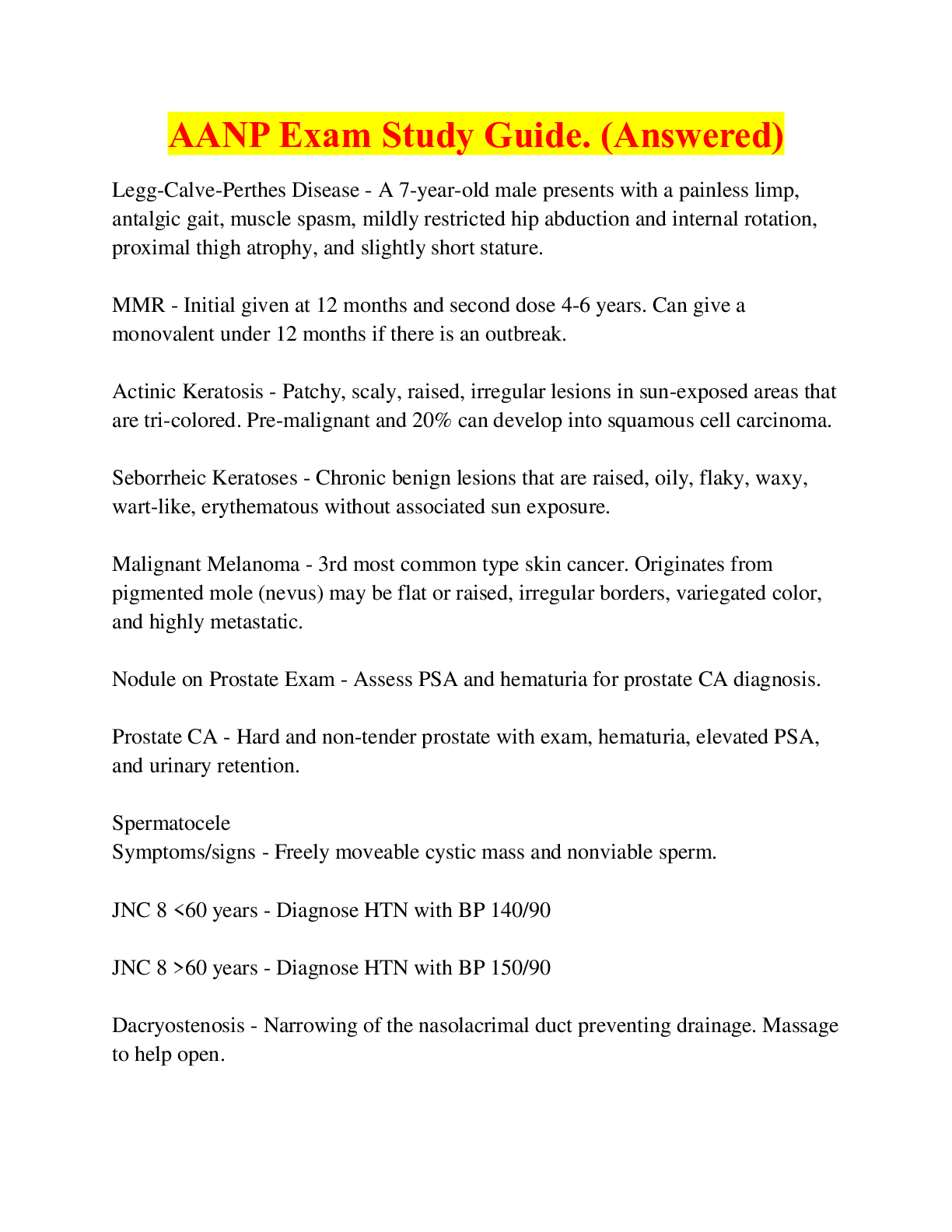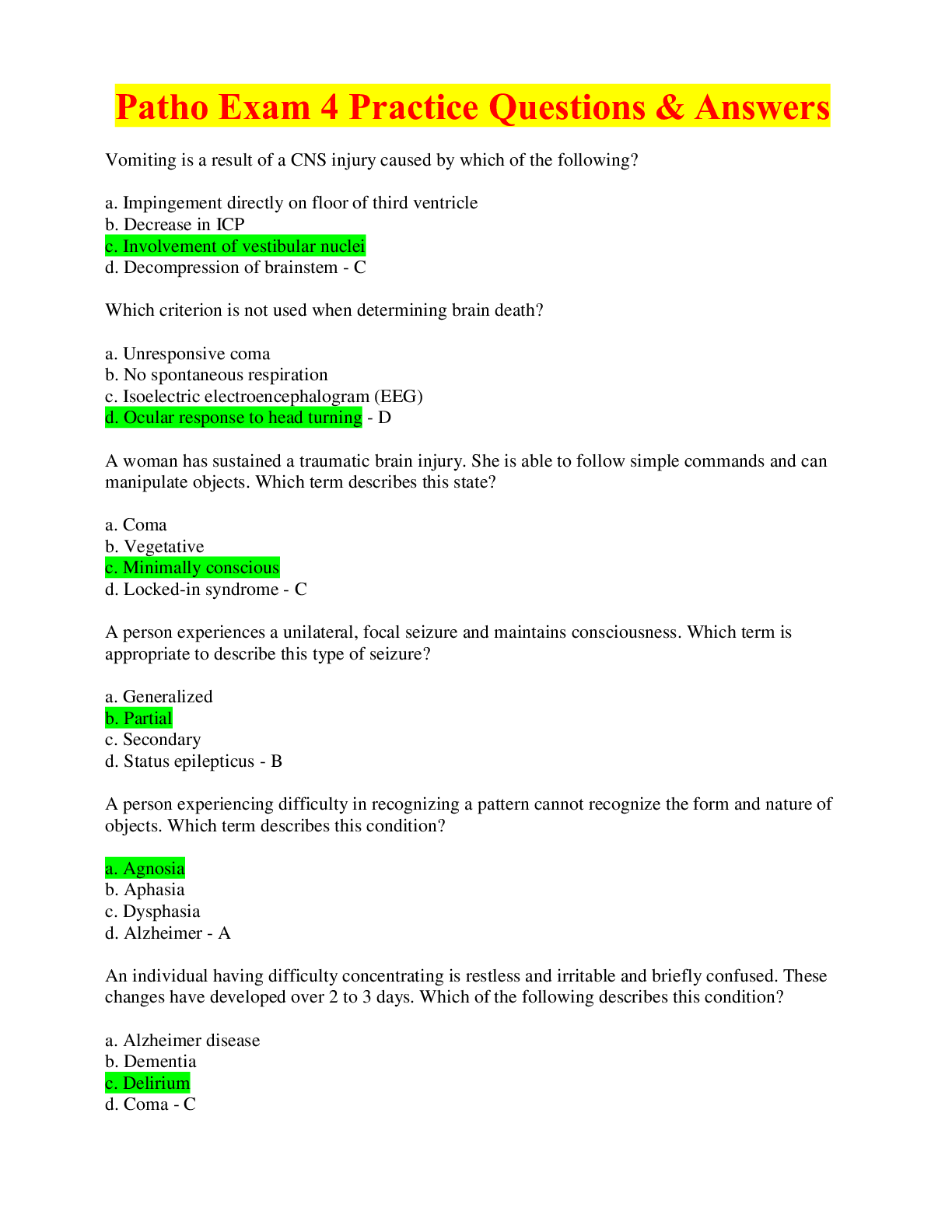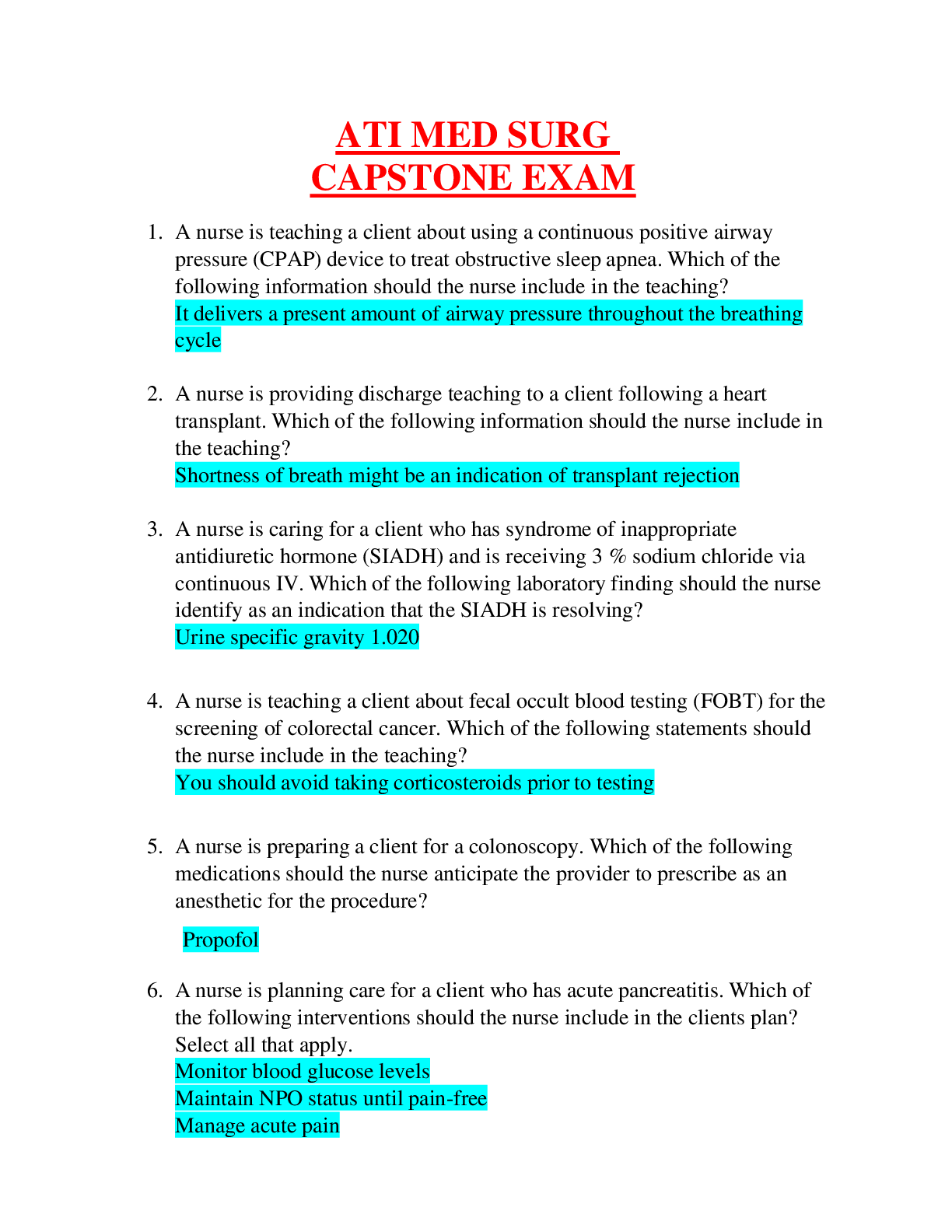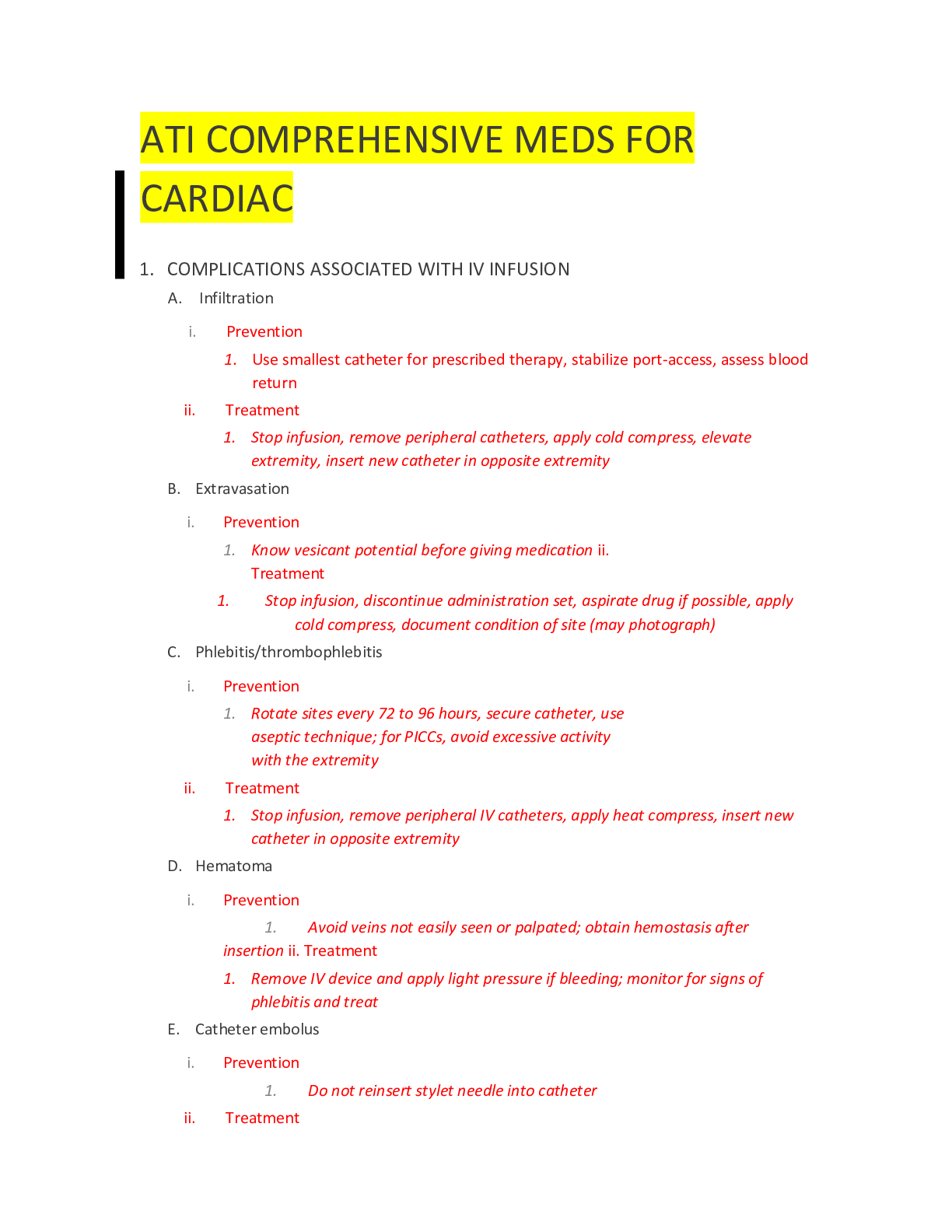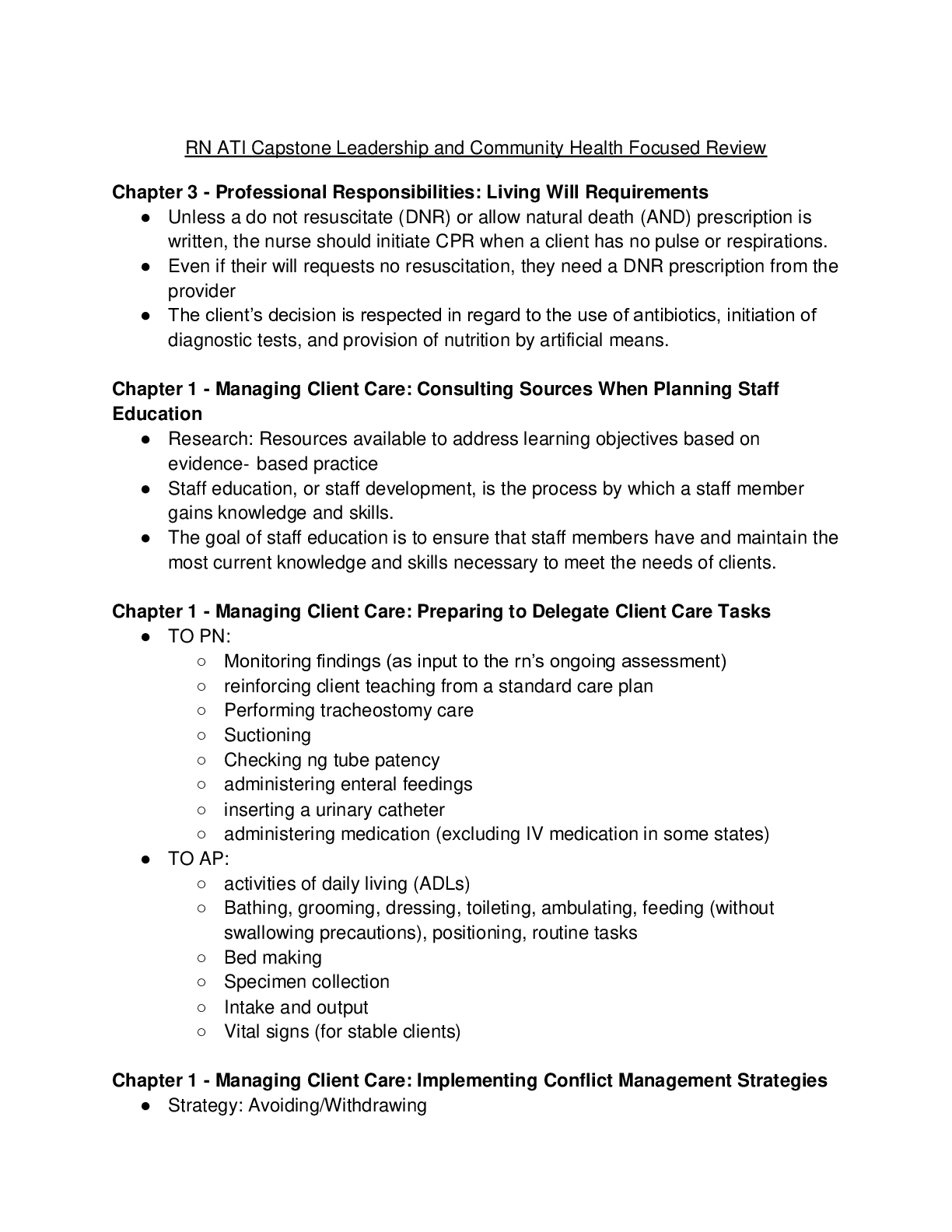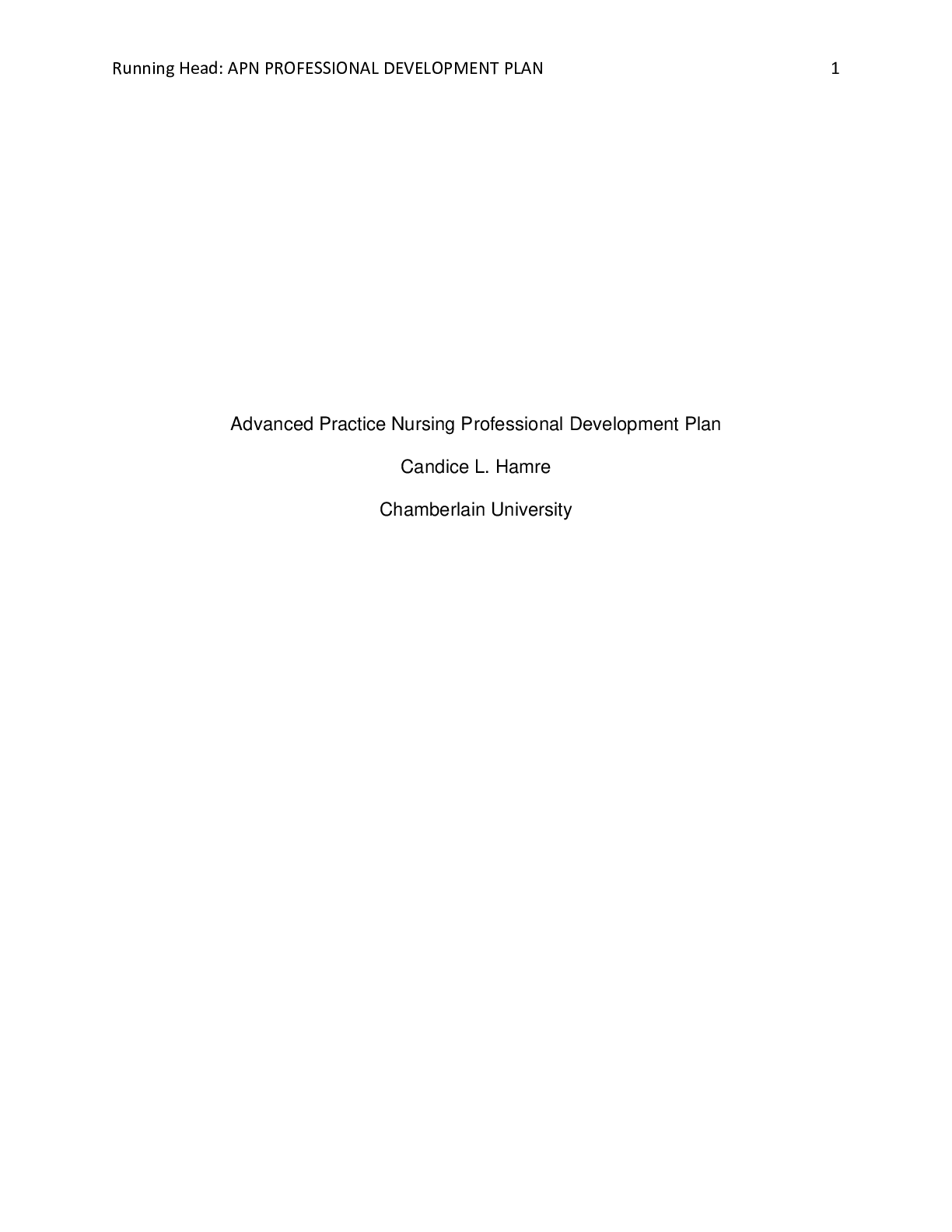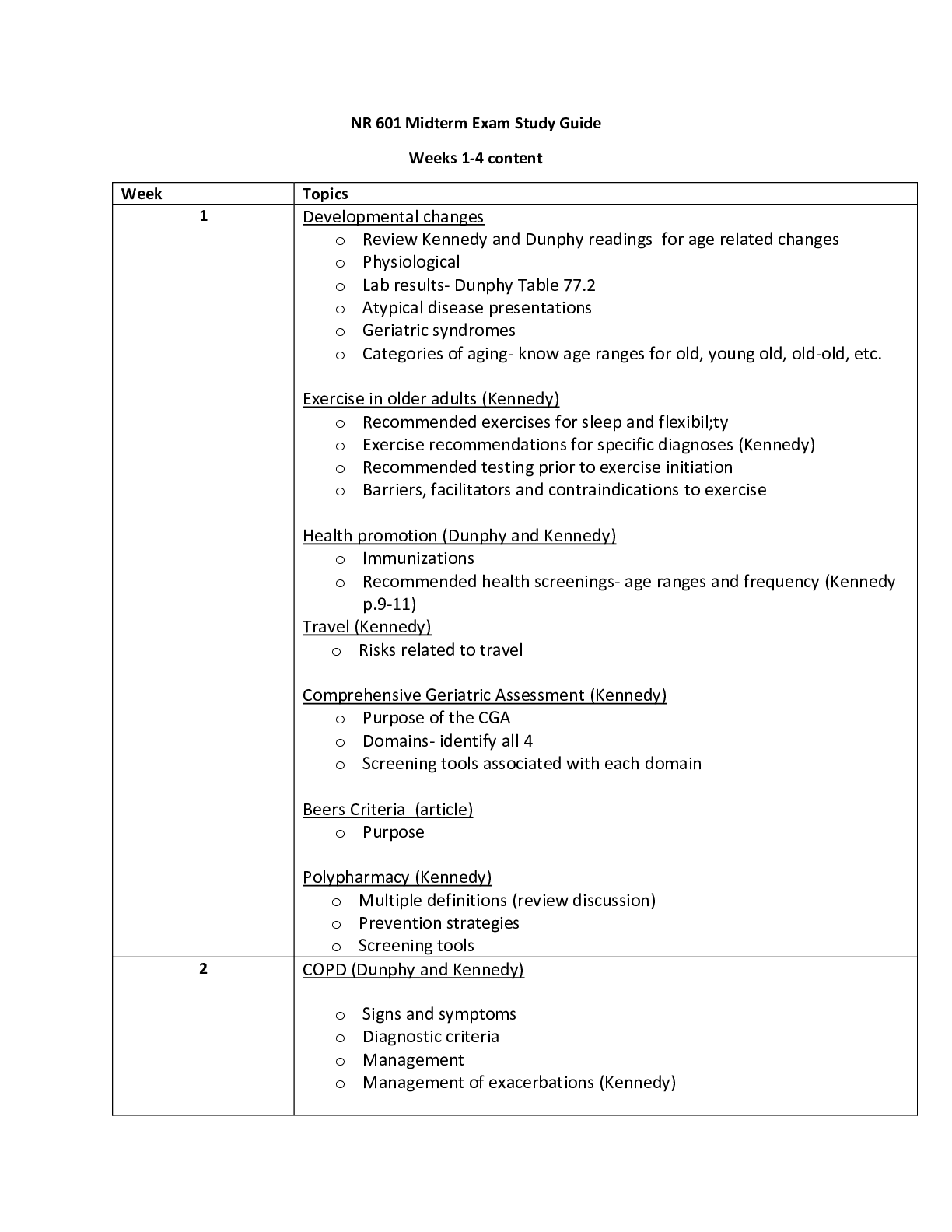*NURSING > STUDY GUIDE > FINAL PHARMACOLGY EXAM STUDY GUIDE 2021 (All)
FINAL PHARMACOLGY EXAM STUDY GUIDE 2021
Document Content and Description Below
FINAL PHARMACOLGY EXAM STUDY GUIDE 2021-Anti-inflammatory Drugs NSAIDS (ATI 279) – inhibits cyclooxygenase 1 & 2 : suppresses inflammation, relieves pain Ibuprofen Salicylates (Aspirin) -Block in... flammatory response, antipyretic (fever blocker), analgesic, antiplatelet aggregation -Reye syndrome – from aspirin used for fever reduction in children or adults who have viral illness like chicken pox or influenza -cause aspirin toxicity – progresses from salicylism (sweating, fever, acidosis, dehydration, electrolyte imbalance, coma, respiratory depression) Acetaminophen (Tylenol) -analgesic and antipyretic; not anti-inflammatory -Inhibits synthesis of prostaglandin, blocks pyrogens at hypothalamus -No more than 4g (4000mg) a day! Salicylism can occur: dizziness, tinnitus, HA. -Increase risk of bleeding & take with no ALCOHOL!! -antidote: acetylcysteine (mucomyst) – Prevents liver damage Respiratory System Drugs 4 illnesses or diseases that impact URT and LRT? COPD, asthma, pneumonia Upper Respiratory Tract o Antitussives – suppresses non-productive cough/cough reflex o Dextromethorphan (Robitussin) ▪ Cause dizziness, resp. depression, dry mouth ▪ Not for those that need to cough; not for those who have productive cough o Benzonatate (Tessalon) ▪ Local anesthetic on resp. passages, mucus on lungs, pleura. o Decongestants – decrease blood flow in URT and decrease production of secretions vasoconstricts/shrinks swollen mucus memb. Relieves nasal congestion. Tx allergic rhinitis and relief after removal of nasal polyps. o Topical: Oxymetazoline (Afrin) & Tetrohydrozoline (Tyzine) ▪ May cause rhinitis medicamentosa (rebound congestion) if used longer than 3-5 days o Oral: Pseudoephedrine (Sudafed) o Topical steroid: Beclomethasone (Qvar) and Flunisolide o Antihistamines – block inflammation and decreases secretions / expands airways o Diphenhydramine (Benadryl) or Zyrtec (less sedative) ▪ Cause sedation anticholinergic effects: dry mouth, constipation o Expectorants – increase production of cough to clear airway (for those with unproductive cough) o Guaifenesis (Mucinex) ▪ Synergistic effect – combined action greater than each acting separately (used with antitussive or decongestant) ▪ Careful talking with OTC cold meds due to risk of OD o Mucolytics – liquify secretions to aid the clearing of the airways. Treats cystic fibrosis / acute and chronic pulmonary disorders. o Acetylcysteine (Mucomyst) Lower Respiratory Tract o Sympathomimetics – mimic SNS; bronchodilator. Epinephrine, Albuterol – treat asthma attacks o Inhaled-short acting o Oral-long-acting o Anticholinergics – treat bronchospasms w/ COPD; relaxes bronchi muscles= bronchodilation o Ipratropium (atrovent) – causes dry mouth, hoarseness o Xanthines – main tx for chronic asthma/bronchospasms from COPD o Aminophylline, Theophylline – don’t drink caffeine o Therapeutic range: 10-20 mcg/ml o 20-25: n/v, diarrhea, insomnia, HA, irritable o More 30-35: hyperglycemia, decreased BP, arrhythmias, increased HR, death seizure o Glucocorticoids – inhaled steroids o Surfactants – used in lungs to expand alveoli o Beractant CARDIOVASCULAR!! CARDIAC PART 1 Classification for Hypertension (JNC 8/9) Causes for hypertension (know what meds cause it) NSAIDS, oral contraceptives, steroids, sympathomimetics, cocaine, steroids, licorice, herbs Dx: 3 reads over 2-3 weeks (White coat hypertension) Know how to properly administer Target organ damage and hypertension: it has long term effects; MI, heart failure, stroke, kidney disease, retinopathy (complication of diabetes that affects the eyes) Modifiable vs non-modifiable (know therapeutic lifestyle changes) -smoking, obesity, alcoholism, sedentary lifestyle vs age, genetics, race, family history Normal ranges for BMIS (18.6-24.9) Sexual dysfunction is common in antihypertensive drug use Pregnancy: NO beta blockers in 1st trimester; NO ARBs or ACE Inhibitors *Diuretics Prototypes: Lasix (Black Box warning, makes you hypovolemic-really know BP and HR) -BB WARNING: water and electrolyte depletion and severe diuresis, makes you hypovolemic -risk of falls, orthostatic hypotension is expected -signs and symptoms of hypokalemia (less than 3.5) and hypovolemia (blood volume depletion), hyponatremia (decrease in sodium levels, less than 135)….deadly, cardiac arrhythmias -TREATS PULM. EDEMA FROM HF, HYPERCALCEMIA, HTN Loop diuretics: give potassium chloride, hyperkalemia concern (last line). Lasix is K depleting – give K (banana, potatos, dried fruit, nuts, spinach, citrus fruit) OTOTOXIC!!! [Show More]
Last updated: 2 years ago
Preview 1 out of 51 pages
Buy this document to get the full access instantly
Instant Download Access after purchase
Buy NowInstant download
We Accept:

Reviews( 0 )
$17.50
Can't find what you want? Try our AI powered Search
Document information
Connected school, study & course
About the document
Uploaded On
May 14, 2021
Number of pages
51
Written in
Additional information
This document has been written for:
Uploaded
May 14, 2021
Downloads
0
Views
52


